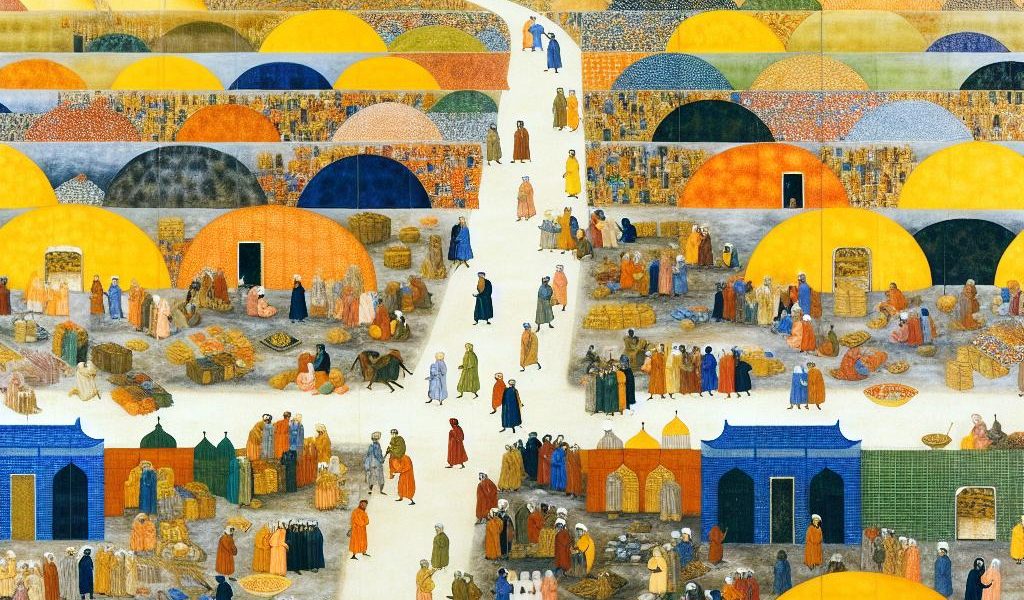
How the SIlk Road shaped the world?
admin - April 1, 2025The Silk Road: A Crucial Catalyst in World History
The ancient Silk Road was much more than merely a network of trade routes; it was a pivotal artery in the development of civilizations spanning continents. From Asia and the Middle East to Africa and Europe, the Silk Road played an essential role in facilitating not only the exchange of goods but also nurturing the flow of ideas, culture, and technology. While stretching over 7,000 kilometers, the Silk Road was instrumental in connecting diverse peoples, economies, and societies, thus helping to shape the course of history in profound and lasting ways. For those interested in delving deeper into this historic network, a comprehensive resource can be found at Silk Road Network.
The Exchange of Goods and Innovation
The Silk Road is historically recognized for the wealth of luxury goods it brought to different parts of the world, including exquisite silk from China, aromatic spices from India, precious gold and ivory from Africa, and sophisticated glassware from the Roman Empire. These commodities facilitated economic interaction and interdependence that laid the foundation for international trade practices we see today. Moreover, the movement of these goods brought with it various innovations. For instance, papermaking techniques that originated in China found their way to the Islamic world and subsequently to Europe. This particular spread revolutionized how knowledge was recorded and communicated, playing a transformative role in educational practices.
Cultural Interactions and the Spread of Ideas
While facilitating trade, the Silk Road was also a significant channel for the cross-fertilization of cultural and religious ideas. It was through this route that Buddhism disseminated from India into Central Asia and China. Similarly, Islam and Christianity found new followers as they spread across vast lands. Monasteries and caravanserais along the Silk Road were more than mere rest stops—they were spiritual and cultural hubs that welcomed travelers from different backgrounds. These interactions contributed to the multicultural societies we witness today, enriching local cultures with philosophical, artistic, and culinary influences that continue to resonate globally.
Technological Diffusion
The Silk Road was not just a trade route; it was a corridor of knowledge and technology. As merchants and travelers moved along its paths, they carried with them more than goods; they shared technological innovations and scientific knowledge. Instruments like the astrolabe and the numeral system made their way west, significantly impacting Europe, especially during the period of the Renaissance. This era, marked by a resurgence of learning, was fueled by the knowledge and technologies that had been transmitted through the Silk Road, thereby shaping the course of scientific inquiry and cultural development in profound ways.
Formation of Political Alliances and Empires
Politically, the Silk Road had far-reaching ramifications. The trade routes augmented the prosperity and power of empires such as the Tang Dynasty, the Mongol Empire, and the Byzantine Empire. These political entities capitalized on the trade flowing through their domains, using their wealth to expand influence and territory. The control of Silk Road segments often led to strategic alliances and, at times, rivalries. These dynamics were crucial in shaping the historical geopolitical map of Eurasia, highlighting the enduring interconnectedness of political and economic spheres.
Analysis of the historical significance of the Silk Road provides a vantage point into the interconnected nature of our contemporary world. Modern globalization, with its complex weave of cultural, technological, and economic exchanges, is in many ways a continuation of the legacies left by these ancient routes. By reflecting on the Silk Road, we gain invaluable insights into how exchanges across cultural and national boundaries have always been central to the evolution of human civilization and continue to mold the world we live in today.
In conclusion, understanding the Silk Road sheds light on the dynamics of how ancient trade routes contributed to the development and enrichment of human civilization. Each facet of the Silk Road—from economic interactions and technological diffusion to cultural exchanges and political formations—is a testament to the profound impact this network had on history. As we study this ancient network, it reminds us of the global interconnectedness that continues to influence contemporary societies, urging us to appreciate the complexity and richness of our shared human heritage.
This article was last updated on: April 1, 2025
